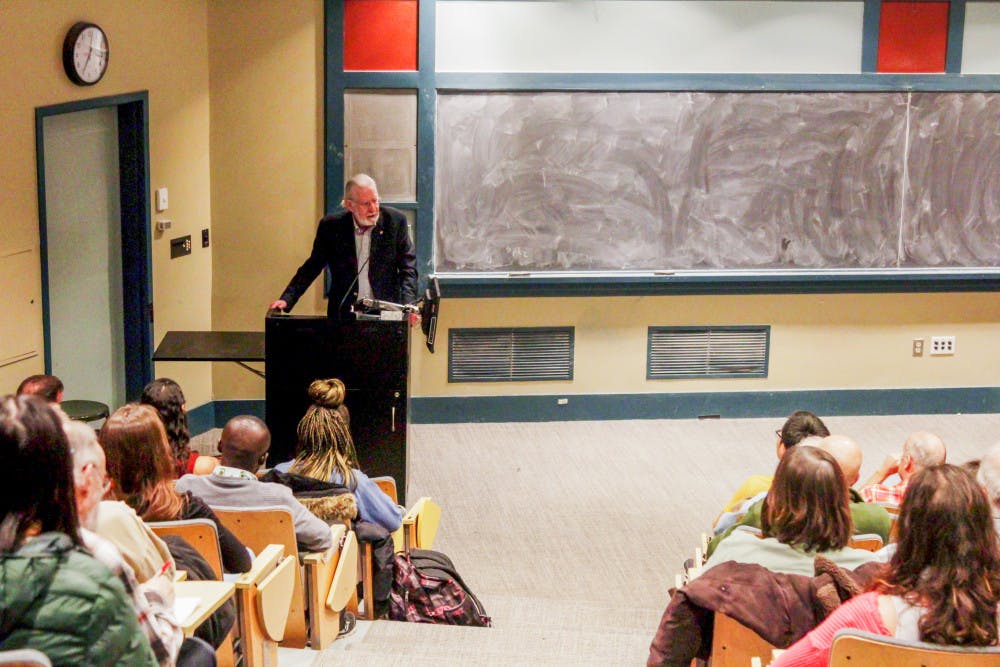Don Wilmeth stands near the stage. His white hair is combed back in stark contrast with his dark suit, punctuating his countenance — a sort of intellectual tranquility reserved for retired professors. He smiles, imploring the shy audience to come toward the stage. A mumble ensues as the crowd drifts into the shadow of his charisma.
A professor emeritus of the theatre arts and performance studies department and curator of the Don Wilmeth Endowed Lectureship, Wilmeth works with the Friends of the Library to present an annual lecture on theater and entertainment. Monday, Alex Stone — professional writer praciticing magician — presented his studies, which examine the confluence of science and magic to reveal elements of human psychology.
Wilmeth, who said he found Stone’s book “Fooling Houdini” both “erudite and dynamic,” sought Stone out as a speaker, hoping he might garner some attention to Brown’s “world class collection devoted to conjuring as a performing art.” Though his lecture series covers “intentionally ambiguous” topics, he has hosted two magicians as part of an eclectic group of 13 speakers all interested in performance — ranging from comics to historians.
The crowd, as if by magic, went silent at 7 p.m. Introductions followed introductions as dramatists joked in their jargon about the “punchline-able” aspects of experimental theater and magic. Eric Ehn, professor of TAPS, described Stone’s work as a fitting series of nerdy prose interspersed with “cultishness” and “pretensions to the divine,” punctuated by “bad jokes.”
As a child, Stone received a magic kit. But while many boyhood magicians have since abandoned their cards and wands, “I didn’t grow out of it,” he said. After studying at Harvard and receiving his master’s degree in physics from Columbia, he developed a unique way of combining his interests.
“Magic exploits a lot of cognitive gaps in our awareness,” he said. Informed by a series of distinct experiences, working both in scientific research and — until he was kicked out for revealing secrets — with the Society of American Magicians, his lecture catered to rational skeptics and artists alike.
Stone began his lecture with a simple card trick. In typical magic fashion, a young woman from the audience was left awed by his slight of hand. But the audience did not come for spectacle. The lecture quickly escalated to a discussion of whether magic is art. Stone recited a quote he credited to Juan Tamariz, his favorite magician: “Magic is not an art in and of itself but is contained within all art.”
Raised by a “scientist skeptic atheist,” Stone recognized both the “childhood wonder and astonishment” inherent in magic and its contrasting depth.
Magic “reveals a great deal about how the human brain works,” he said.
Stone’s conversation revealed the tactics of the mentalist and referenced physics as well as the underlying workings and magical applications of “cognitive illusion” and “inattention blindness” — phenomena reliant on the brain’s biases.
Stone’s lecture revealed how magic, easily dismissible as an art or as a science, enforces the foundations of both.
Ultimately, he said, “being deceived can be fun.”





